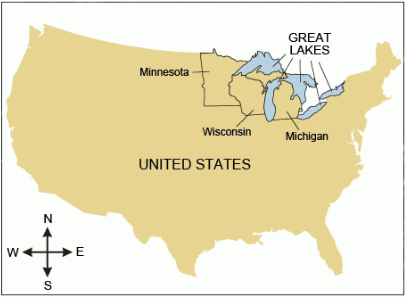题目解析:
【题目翻译】在第5段中,作者为什么要提到包括89条伐木铁路在1887年前横跨密歇根州的信息?
A:认为密歇根州已经取代其他大湖州成为木材工业的中心。
B:提供证据证明伐木铁路对木材工业日益重要。
C:支持这样的说法,即密歇根州的冬天在19世纪末期变得比以前更严酷。
D:挑战气候阻碍轨道铺设的观点
【判定题型】根据题干问法“why ……”,题目询问“the information that 89 logging railroads crisscrossed Michigan by 1887的修辞目的,可以判断本题为修辞目的题。
【关键词定位】第5段,最后一句 By 1887, 89 logging railroads crisscrossed Michigan, transforming logging from a winter activity into a year-round one.
【引用内容分析】题目问作者提到原木输送铁路的原因,全段讲述了因为暖干冬天的影响,人们终于迫于气候原因建立了这样的铁路,说明了铁路是必不可少的,否则将无法输送原木。
【选项分析】
A 选项说为了证明密歇根取代五大湖称为伐木工业中心,错误,运输的目的地便是五大湖,建立铁路是因为无法运输,并非要取代五大湖。
B 选项说了证明了铁路对于伐木工业日益重要,与原文所想表达的意义相似,故正确。
C 选项说是说明了密歇根冬天更加严峻,错误,中心意义错误 。
D 选项说反驳了气候阻碍铺铁路,逻辑错误,是因为气候所以才要铺铁路。


 In nineteenth-century America, practically everything that was built involved wood.Pine was especially attractive for building purposes.It is durable and strong, yet soft enough to be easily worked with even the simplest of hand tools.It also floats nicely on water, which allowed it to be transported to distant markets across the nation.The central and northern reaches of the Great Lakes states—Michigan, Wisconsin, and Minnesota—all contained extensive pine forests as well as many large rivers for floating logs into the Great Lakes, from where they were transported nationwide.
In nineteenth-century America, practically everything that was built involved wood.Pine was especially attractive for building purposes.It is durable and strong, yet soft enough to be easily worked with even the simplest of hand tools.It also floats nicely on water, which allowed it to be transported to distant markets across the nation.The central and northern reaches of the Great Lakes states—Michigan, Wisconsin, and Minnesota—all contained extensive pine forests as well as many large rivers for floating logs into the Great Lakes, from where they were transported nationwide.